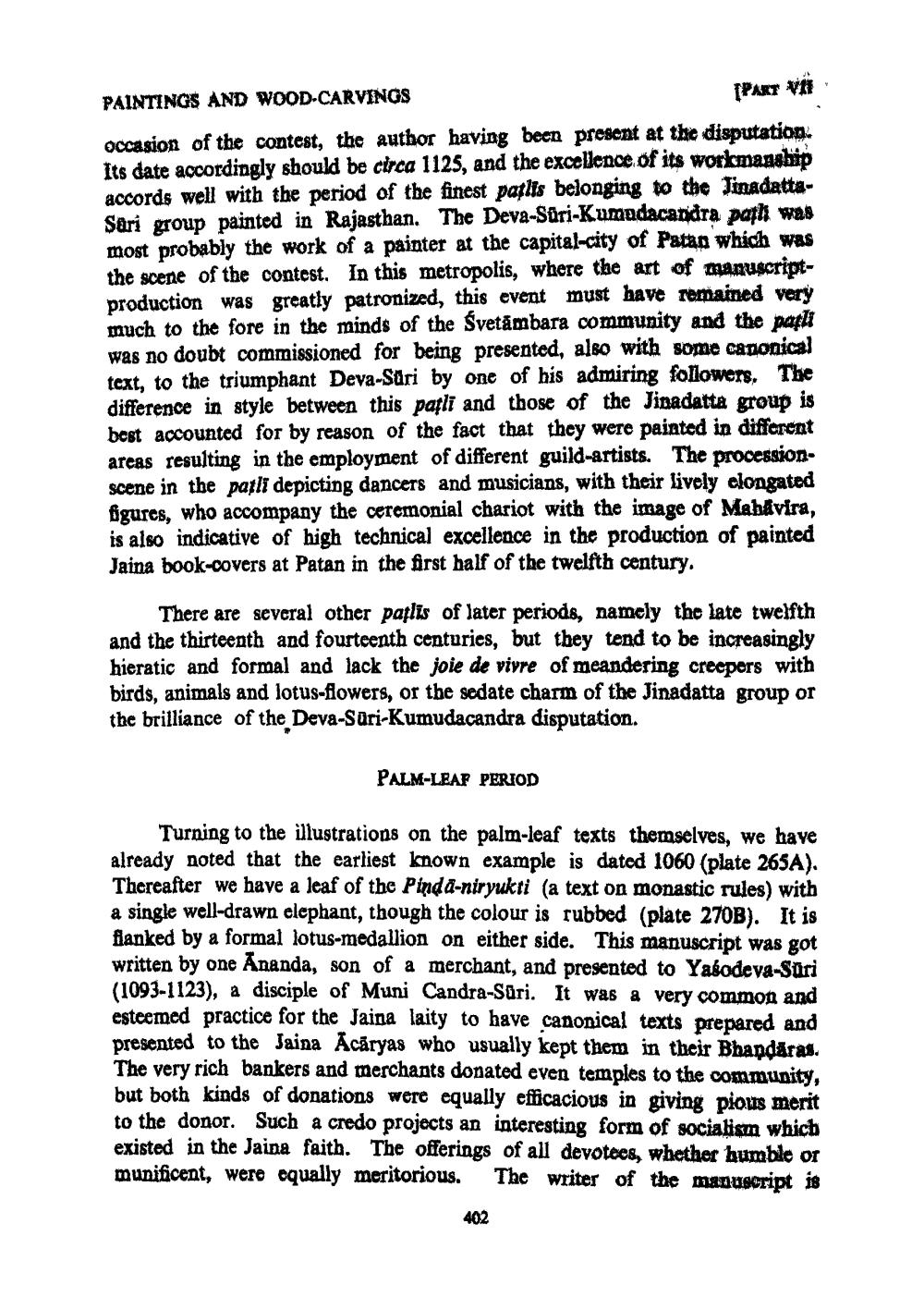________________
(PART VD
PAINTINGS AND WOOD-CARVINGS occasion of the contest, the author having been present at the disputation. Its date accordingly should be circa 1125, and the excellence of its workmanship accords well with the period of the finest pajlis belonging to the JinadattaSari group painted in Rajasthan. The Deva-Säri-Kumudacandra parh was most probably the work of a painter at the capital city of Patan which was the scene of the contest. In this metropolis, where the art of manuscriptproduction was greatly patronized, this event must have remained very much to the fore in the minds of the Svetāmbara community and the pathi was no doubt commissioned for being presented, also with some canonical text, to the triumphant Deva-Sari by one of his admiring followers. The difference in style between this pafli and those of the Jinadatta group is best accounted for by reason of the fact that they were painted in different areas resulting in the employment of different guild-artists. The processionscene in the parli depicting dancers and musicians, with their lively elongated figures, who accompany the ceremonial chariot with the image of Mahavira, is also indicative of high technical excellence in the production of painted Jaina book-covers at Patan in the first half of the twelfth century.
There are several other paflis of later periods, namely the late twelfth and the thirteenth and fourteenth centuries, but they tend to be increasingly hieratic and formal and lack the joie de vivre of meandering creepers with birds, animals and lotus-flowers, or the sedate charm of the Jinadatta group or the brilliance of the Deva-Sūri-Kumudacandra disputation.
PALM-LEAP PERIOD
Turning to the illustrations on the palm-leaf texts themselves, we have already noted that the earliest known example is dated 1060 (plate 265A). Thereafter we have a leaf of the Pinda-niryukri (a text on monastic rules) with a single well-drawn elephant, though the colour is rubbed (plate 270B). It is flanked by a formal lotus-medallion on either side. This manuscript was got written by one Ananda, son of a merchant, and presented to Yasodeva-Suri (1093-1123), a disciple of Muni Candra-Suri. It was a very common and esteemed practice for the Jaina laity to have canonical texts prepared and presented to the Jaina Acāryas who usually kept them in their Bhandaras. The very rich bankers and merchants donated even temples to the community, but both kinds of donations were equally efficacious in giving pious merit to the donor. Such a credo projects an interesting form of socialism which existed in the Jaina faith. The offerings of all devotees, whether humble or munificent, were equally meritorious. The writer of the manuscript is
402




